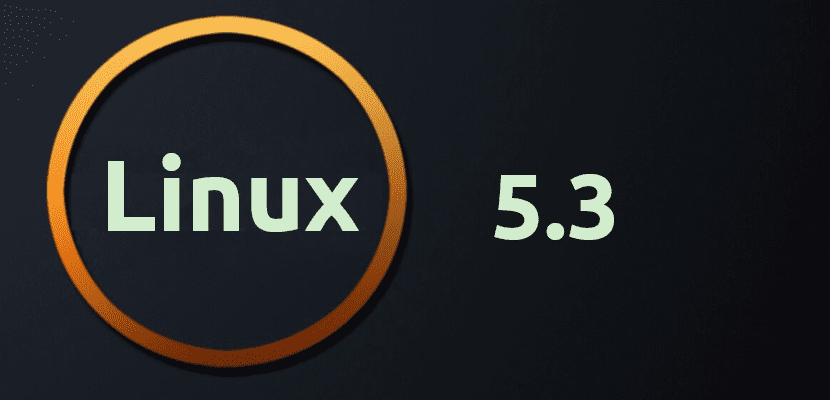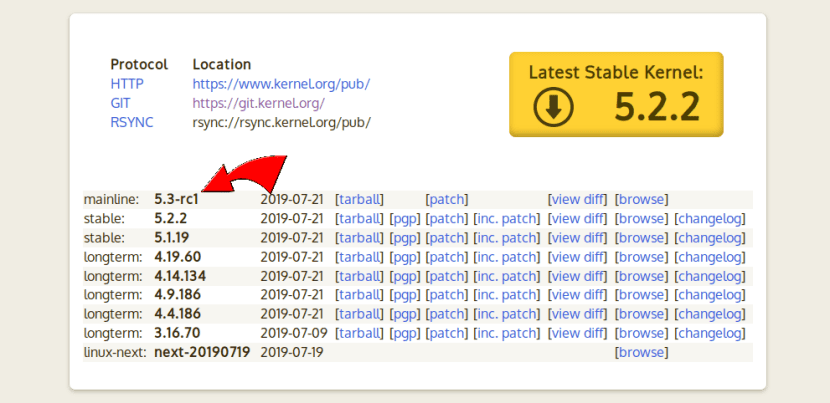
After the function request phase or “pull requests”, we have already (have) fully entered the development phase of Linux 5.3. From now on, Linus Torvalds will go to work for the next major Linux kernel release, releasing one Release Candidate per week for a total of 7-8. As long as you don't run into any setbacks, the next major release will arrive in about two months.
Linux 5.3 will come with many interesting news. Among the most striking we el support for the keyboards and trackpads of the latest MacBook and MacBook Pro from Apple. This was a novelty accepted at the last minute and to achieve it they had to reverse engineer much of Apple's protocol, with which they were able to write the basic Linux driver. Below you have the rest of the news that will arrive with Linux 5.3.
What's New in Linux 5.3
- Support for 2015 MacBook and MacBook Pro keyboards and trackpads thanks to Apple's SPI driver added at the last minute.
- Support for the ASUS TUF gaming computer has been included within the ASUS WMI driver.
- Chrome OS platform components have been added, including a lid angle sensor driver and other drivers to handle Google's custom built-in driver on Chromebooks and other newer hardware bits.
- New input device support, including different Wacom tablets and Saitek racing wheels.
- Improved support for 100GbE network drivers and Google GVE.
- ACRN guest hypervisor support for this Intel-developed small footprint hypervisor focused on security-critical, real-time, IoT use cases.
- The kernel now enables the compile-implicit-failed flag to detect switch case crash behavior for potential errors or unexpected behavior.
- Use of clamping on the programmer with a focus on Arm's Energy Conscious Programming.
- Intelligent Platform Management Bus controller support for standardized interconnection between boards in a chassis.
- Another new VirtIO driver merged for Linux 5.3 is the VirtIO-IOMMU driver to provide a virtual IOMMU device to guests.
- The Linux kernel now supports compressed firmware files to save a few hundred megabytes of disk space if all Linux firmware / microcode binaries are compressed.
- New clone3 system call, Realtek driver updates, and other summer updates.
- Support for xxHash has been added to the crypto area.
- The FMC subsystem is being phased out because CERN developers decided that it is easier to start from scratch than to fix this subsystem.
What's new in file systems, graphics, and processors
- UBIFS now supports compression of the Zstd file system.
- The NFS client now allows multiple TCP connections to a server via the new "nconnect =" mount option.
- Many improvements in Ceph.
- XFS and Btrfs will be polished.
- F2FS includes native support for SWAP.
- Faster case-insensitive searches for EXT4 based on this optional feature originally introduced in Linux 5.2.
- On-site decompression of LZ4 for EROFS.
- Initial AMDGPU Navi support for the new Radeon RX 5700 series.
- Support for Turing TU116 has been included within the Nouveau open source driver for limited support for NVIDIA graphics.
- Intel HDR display support is now ready to run from the kernel for Icelake and Geminilake or later.
- The DRM MSM driver now supports Qualcomm's Adreno 540 GPU.
- Compute Shader support for the Broadcom V3D controller used by boards like the Raspberry Pi 4.
- Improvements in other DRM.
- New on the media front are the Amlogic Meson video decoder driver and other video decoding enhancements.
- Initial support for Intel Speed Select technology on Cascadelake processors.
- Support for new SoCs and ARM boards and improved support for existing boards like the NVIDIA Jetson Nano.
- Support for RISC-V continues to be improved.
- Added support for the Intel Icelake NNPI in various drivers.
- Support has been added for a Raspberry Pi CPUFreq driver for your Broadcom SoC.
- Enhanced application usage tracking of AVX-512 to allow more optimal AVX-512 task placement for task schedulers in user space and others wondering if an application is actively using AVX-512 .
- The Linux performance counter subsystem has started preparing for Intel's Snow Ridge.
- Intel multi-array CPU topology support for AP Cascadelake processors.
- Support for Intel UMWAIT has been included.
- Official support for Zhaoxin x86 CPUs for Chinese processors derived from VIA x86 technology.
- Various ARM 64-bit updates from AVMv8.5-bit to system call emulation support.
And a novelty, but negative: on the graphical front, the kernel developers achieved a change that largely breaks the NVIDIA driver on POWER architectures. NVIDIA will have to fix this problem with a new release of the POWER Linux driver, but when they fix it remains to be seen. NVIDIA has about two months to correct this bug.
